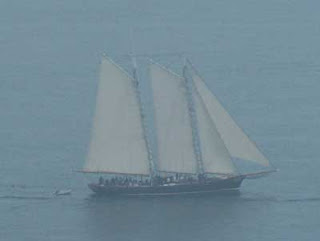Thanks Yuma! I have found that is what we all should be saying, that is if you like a good salad….
Hundreds of years ago Yuma was one of the few places along the Colorado River where a crossing could be made with relative safety. The river, which could be as wide as 15 miles during spring runoff (from the North), narrowed to 400 yards between two granite outcroppings. This made it the gateway to California and Mexico and the point was named “Yuma Crossing” after the Indians native to the area. This crossing was important as far back as 1540 when the first Spanish explorers came North out of Mexico.
Yuma was an access point for seekers of the gold discovered in California and also the hordes of others seeking other forms of fortune in Southern California, the land of milk and honey. It was the home of the Yuma Territorial Prison which, between 1876 and 1909, housed Arizona’s most dangerous and notorious criminals. It residents were infamous enough to have been made the center figures of many books, movies and TV shows. Believe me, during the summer months that prison must have been as close to a sentence in hell as a living man could be given.
Today Yuma is the home of the Yuma Proving Grounds, for the desert testing of military equipment. It is only a few miles from the Imperial Dunes in California, a vast series of sand dunes where people play and where a sequence from Stars Wars was filmed. It is the gateway (via Interstate 8) to Southern California and parts of Mexico.
However, for us veggie lovers, the most important point in Yuma’s history may have occurred in 1912 when the Yuma Siphon was opened. The siphon is an underground U-shaped canal that carries irrigation water under the Colorado River. At the time it was an impossible engineering feat, but they built it anyway. Vertical tunnels on either side of the river go down over 100 feet to bedrock. A horizontal tunnel joins the two through more than 400 yards of bedrock. This is no small canal either, dozens of men worked in the tunnels at the same time.

Now back to the salads. The Yuma valley is fertile (from thousands of years as a flood plane), but dry. The irrigation water coming through the siphon allowed the valley to bloom. One of the primary crops is now lettuce. And there you go, salads for you and me. The lettuce (and several other veggies like cauliflower, broccoli, cabbage, etc.) is hand picked and processed primarily by Mexican laborers (be careful George, send ‘em home and we may all have to give up salads).

There are undoubtedly many companies distributing the veggies out of this desert oasis. Foxy is one I recognize as is Fresh Express, with a processing plant only about two miles from where I am staying (so they get to be “featured” with a picture of their plant). By the way, it is too hot to grow veggies in the summer so they switch over to cotton, making use of the land year round.

Here's a cauliflower for you. So, “Thanks Yuma”, and pass the Newman’s Own Balsamic Vinaigrette and some of those blue cheese crumbles.
 La Jolla is one of the most picturesque towns in San Diego County. We spent only one day cruising the place and didn’t cover a tenth of the hottest photo spots. This is a shot from the largest of its beaches.
La Jolla is one of the most picturesque towns in San Diego County. We spent only one day cruising the place and didn’t cover a tenth of the hottest photo spots. This is a shot from the largest of its beaches. La Jolla draws an eclectic, but well to do, crowd. They surf…
La Jolla draws an eclectic, but well to do, crowd. They surf… and they sunbathe…
and they sunbathe… …and sunbathe some more…
…and sunbathe some more… …and do artsy things…
…and do artsy things… They play golf…….here at Torrey Pines Municipal Golf Course, home to the Buick Invitational and the 2008 US Open. This shot looks down the fairway of number one on the South Course.
They play golf…….here at Torrey Pines Municipal Golf Course, home to the Buick Invitational and the 2008 US Open. This shot looks down the fairway of number one on the South Course. Sometimes they fling themselves off a 300 foot cliff at the La Jolla Glider Port…
Sometimes they fling themselves off a 300 foot cliff at the La Jolla Glider Port… But mostly they just enjoy their little corner of heaven with great views, good restaurants, and plenty of money to spend. By the way, every significant stock trading house had a big plush office within two blocks of where I took this picture.
But mostly they just enjoy their little corner of heaven with great views, good restaurants, and plenty of money to spend. By the way, every significant stock trading house had a big plush office within two blocks of where I took this picture.


























